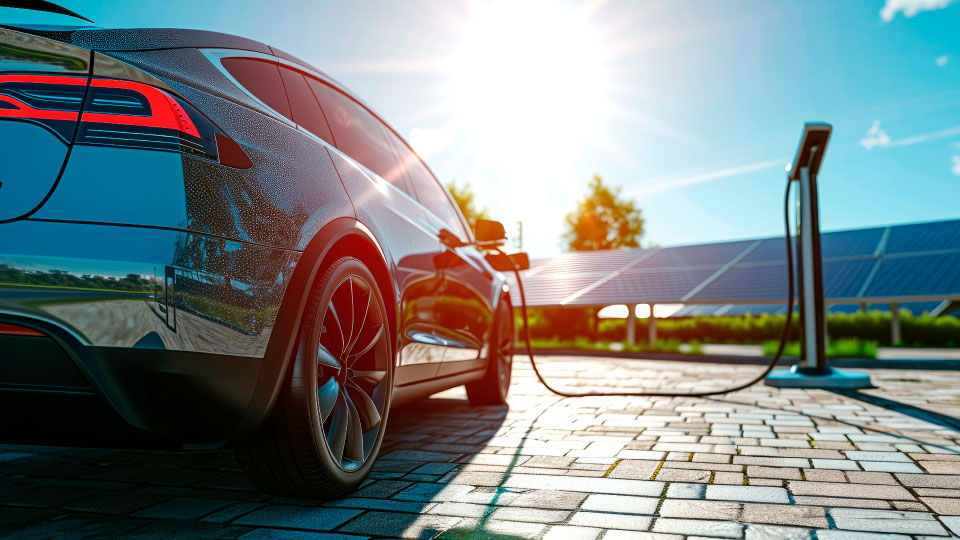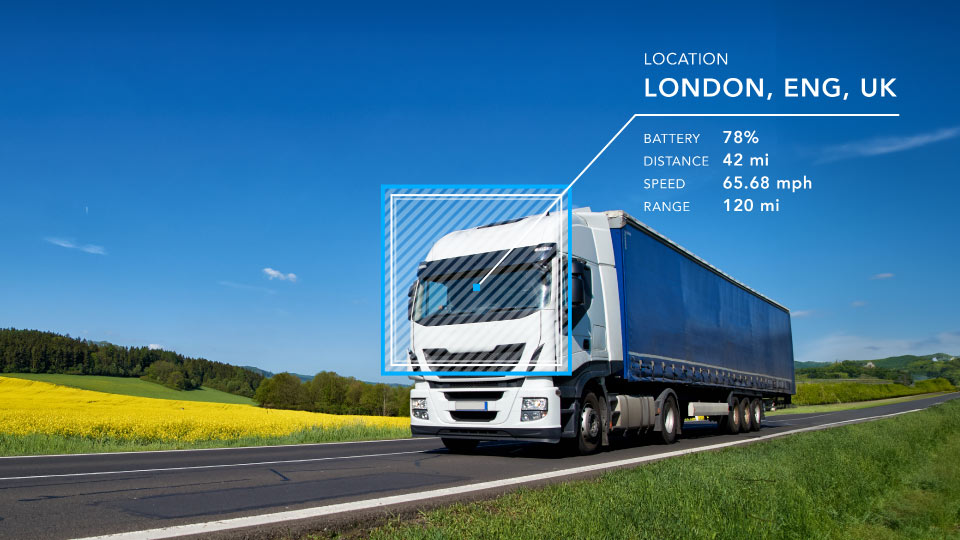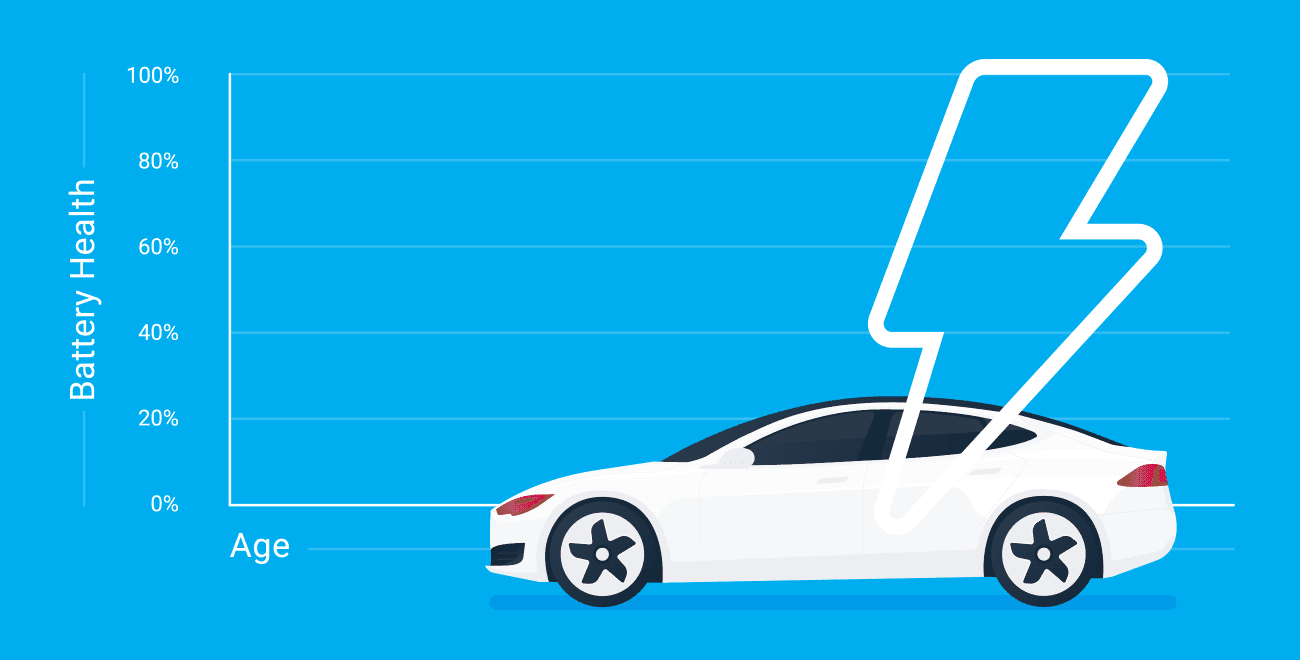Selecting an EV-ready solution: Telematics RFP checklist
Read this telematics RFP checklist for tips on selecting an EV-friendly telematics provider.

The way we manage fleets is rapidly evolving. Fleets of all sizes, across all service sectors, are turning to telematics platforms to optimise their operations. Meanwhile, the composition of those fleets is also in flux, with many transitioning towards electric vehicles (EVs).
Whether you are just beginning to add EVs to your fleet or you already have some in operation, it is critical that your telematics solution fully supports them. EVs have a number of unique metrics that need to be monitored in order to optimise their performance, range and return on investment. Here are some of the key EV-related features you should be looking for when selecting a telematics provider or you can download our Telematics RFP checklist for a full list of features.
EV suitability
Before you can start electrifying your fleet you must determine which vehicles are best suited to go electric and where geographically they would make most sense. This requires the ability to ensure the EVs can meet your driving range requirements when taking into account the viability of charging, and then to quantify the financial and environmental impact of the new vehicles.
There is more to understanding how far an EV can travel than simply looking at a vehicle’s rated range. The first step is to assess the vehicle’s daily driving needs and match those against your preferences for charging at the depot, at home or on-route. Your telematics solution should leverage data from your own driving profiles including dwell locations and times and estimated likely state-of-charge, and match it with real-world EV capabilities to provide greater precision in EV recommendations. A fleet’s unique operating conditions, such as seasonal differences in temperature and whether the vehicle’s duty cycle allows for opportunity charging during the day, will impact what the true EV range capabilities and requirements are. Currently, EVs have a higher acquisition cost than conventional internal combustion engine (ICE) vehicles, but significantly lower operating costs. For a more accurate financial suitability assessment, fleets should consider the vehicle’s total cost of ownership (TCO), which will include savings from lower fuel costs and reduced maintenance.
Finally, you must quantify the impact the EVs will have on your fleet’s overall greenhouse gas (GHG) emissions. If you are moving towards becoming more sustainable, it is critical to quantify the amount of CO2 emissions and fossil-fuel consumption you can reduce with electrification.
-860786080@2x.jpg)
Real-time state of charge
One of the most important EV-specific pieces of data is a vehicles' battery charge percentage, referred to as state of charge (SOC). This is an EV's equivalent of a fuel gauge and represents how much energy the vehicle has left.
Dispatch and fleet managers will need a precise picture of the SOC in real time to optimise their operations. No one wants a stranded driver or to have to turn down a job because of the uncertainty of whether a vehicle has sufficient charge to complete the task. The best way to avoid this is to monitor the vehicle's SOC, ideally in single percentage increments. This assures you that the vehicle will be able to complete its task before needing to be charged.
-860786080@2x.jpg)
Active charging status
Another important piece of real-time data is the active charging status. To make sure that you're getting maximum utilisation out of your EVs, you may need to optimise charging times for each vehicle. Your telematics software should provide you with a live charging status for each vehicle. Knowing each vehicle's real-time charging status can streamline your operations and make sure that you always have a vehicle that is ready for the task at hand.
Tracking carbon emission reduction
Reducing a fleet's GHG emissions is a driving factor for EV adoption. Your telematics solution should be able to help you track your progress towards internal suitability goals or government mandates. This could include calculating the amount of CO2 emissions avoided by not using ICE vehicles.
Fuel and EV energy reporting
As with ICE vehicles, it is important to monitor and report on the amount of "fuel" used by each of your EVs. You will also want to understand their energy economy. Similar to MPG or L/100km, you can determine an EV's efficiency by calculating the total electric energy (kWh) consumed over the total distance travelled. This is typically represented as MPG-e or L/100km-e – and these metrics allow you to compare your EVs' performance against the ICE vehicles in your fleet.
When running plug-in hybrid electric vehicles (PHEVs), monitoring both fuel and energy use can help ensure that EV use is maximised, and they're not running solely on petrol. This ensures that the PHEVs are maximising their value from fuel and emissions savings.
In order to get a more complete view of your fleet's operations, your telematics platform should have the ability to compare the performance of your EVs directly against your ICE vehicles in a single fuel economy report. The report will help you to ascertain the savings that your EVs are generating, and allow you to adjust operational behaviour to further increase efficiency and expand the vehicles' electric range.
EV charging history log
In order to optimise your EV operations, you need to better understand their charging behaviour. You can improve your fleet's charging practices by reviewing data on when, where and how they charge. The data also ensures plug-in compliance – making sure that your EVs are plugged in and charging when they are supposed to be. This allows you to maximise the daily achievable range of your EVs so vehicles are operationally ready. Additionally, if your electricity provider offers a time-of-use program you can increase your profitability by having your EVs charge during periods with the lowest electricity rate.
Your telematics software should provide an EV charging history log that tracks all charging events and includes:
- Start/end date and time
- Location by GPS and street address
- Geofence (zone)
- Starting/ending charge % (SOC)
- Energy added (in kWh and Wh)
- Max Power (in kW and W) of the whole charge event
- Current (AC or DC)
- AC voltage
Energy added from non-charging (regenerative) sources
A unique feature of EVs is that they can recuperate some energy when braking or driving downhill. Monitoring the exact amount of regenerative charging that each vehicle benefits from is key to understanding the actual cost and efficiency of your EVs (units in kWh and Wh).
System customisation and scalability
Every fleet is unique and to accommodate this, your telematics solution needs to be flexible. You should be able to toggle between a range of units of measure, such as mi/kWh or kWh/100 mi, for easy comparison. You may want to set up geofences – a way to see if a vehicle is driving or charging in predetermined areas.
Custom notifications or alerts can be an incredibly useful tool. They can be created in order to notify the management team or the driver of specific situations, which could include:
- Low SOC: A vehicle has low SOC during the day and is at risk of not completing the day without charging.
- EV not charging: An EV should be charging, but isn't. This could mean that the EV wasn't plugged in, or that there is a malfunction with the charging station.
- Charging complete: A vehicle is now ready for use, and/or the charging station is now available for use by another vehicle.
- Critical fault code: If the system recognises a significant error it can alert the driver and give them immediate instructions.
- Driver behaviour: The driver is taking an undesirable action, such as speeding, which contributes to a loss of efficiency and is a safety concern.
Electrification does not happen overnight. Replacing ICE vehicles in your fleet will happen gradually as vehicles reach the end of their life cycle. You will want a solution that has the ability to manage both EVs and ICE vehicles within the same platform. Having everything together within one system is more efficient and provides a level of scalability.
Track record of support and partner integrations
Unlike ICE vehicles, EVs are not mandated to communicate information within industry standards. With new makes and models being added regularly, it is important that your telematics solution offers robust support for the EVs available today and future models.
Support applies to more than just the ability to acquire EV-specific performance data – there is an entire ecosystem with other partners that need to work together. Look for a solution that offers a Marketplace with charging equipment, smart-charging solutions, OEM integrations and more.
Download your Telematics RFP checklist
Your time is valuable and having the proper tools is critical to ensure your fleet's long-term success. By understanding key features and requirements, you can find the telematics solution that best fits your complete electrification journey.
Download our Telematics RFP checklist to get started today.
Subscribe to the Geotab Blog
The Geotab Team write about company news.
Table of contents
- EV suitability
- Real-time state of charge
- Active charging status
- Tracking carbon emission reduction
- Fuel and EV energy reporting
- EV charging history log
- Energy added from non-charging (regenerative) sources
- System customisation and scalability
- Track record of support and partner integrations
- Download your Telematics RFP checklist
Subscribe to the Geotab Blog
Related posts
.jpg)
Lead with Trust: How Geotab Helps Businesses Navigate CSRD Compliance
March 19, 2025
2 minute read

2030 or 2035, the UK Needs Meaningful Action on EVs Now
September 6, 2024
2 minute read

Driving smarter: Insights from Geotab’s “Taking Charge” Report
August 8, 2024
2 minute read
-EN-Na-final-July24_Card-1x.jpg)
Gross Vehicle Weight Rating: GVWR for heavy loads and lorries
June 26, 2024
2 minute read

The art of the possible: Insights from Geotab’s “Taking Charge” Report
June 20, 2024
3 minute read

